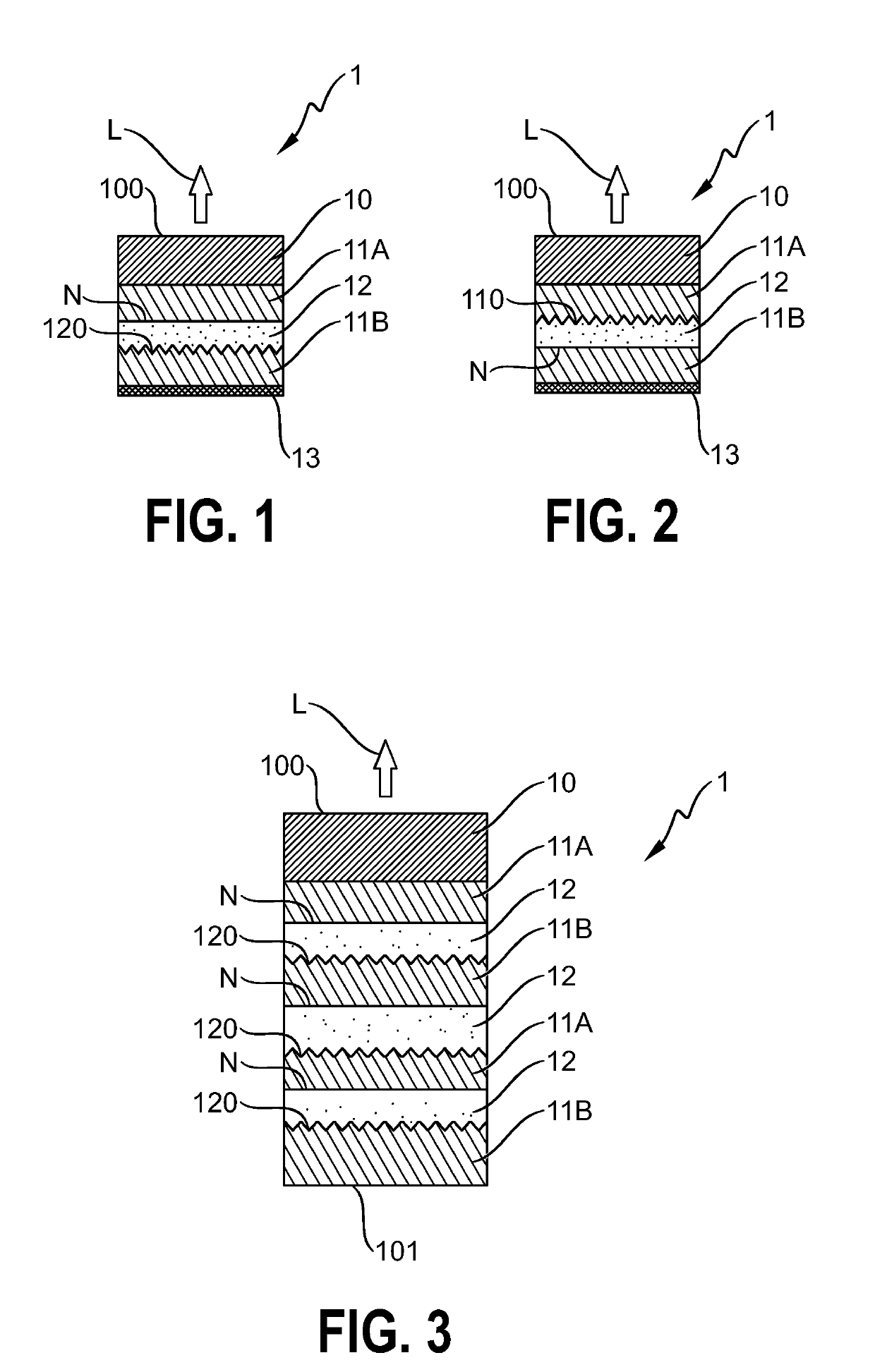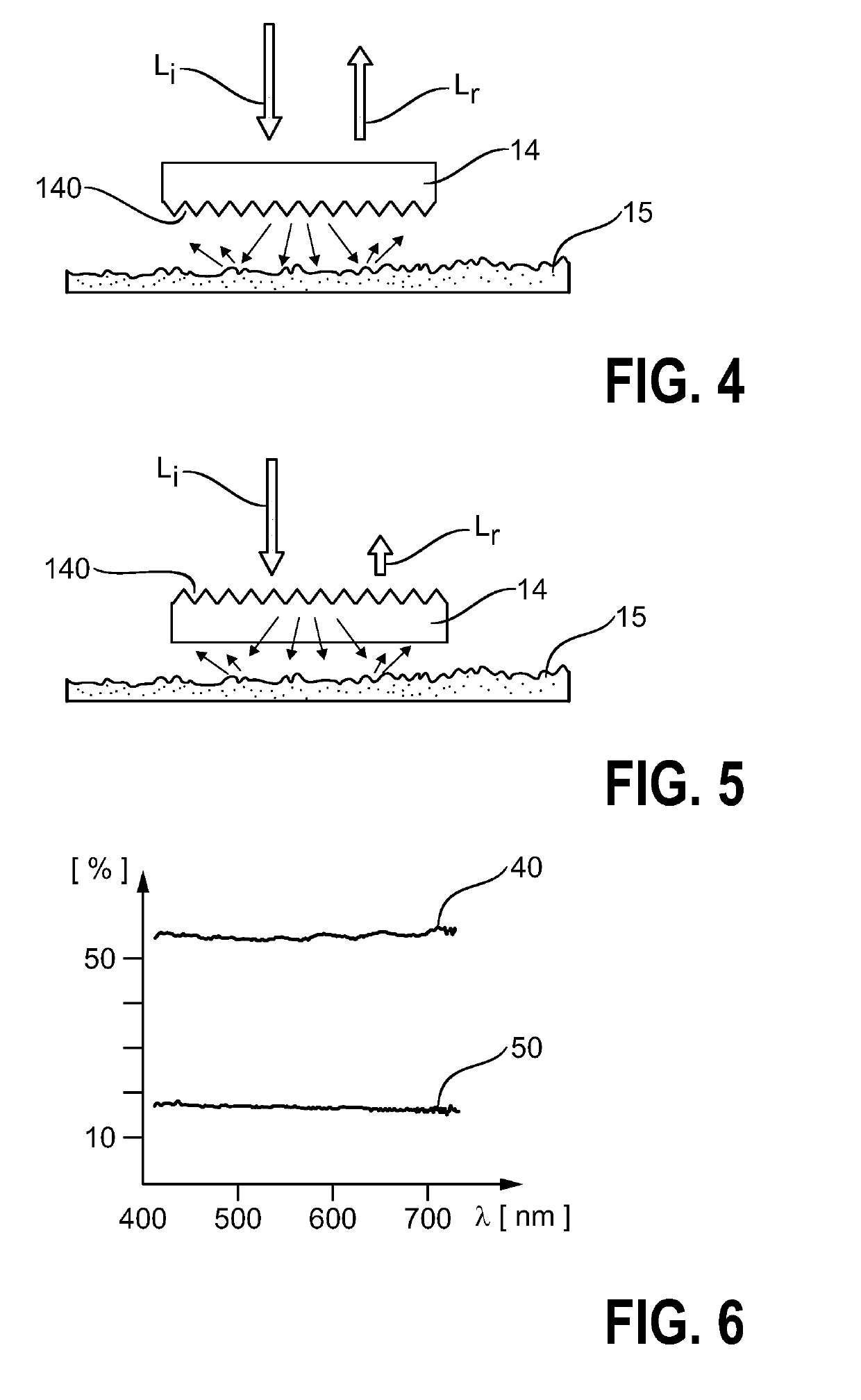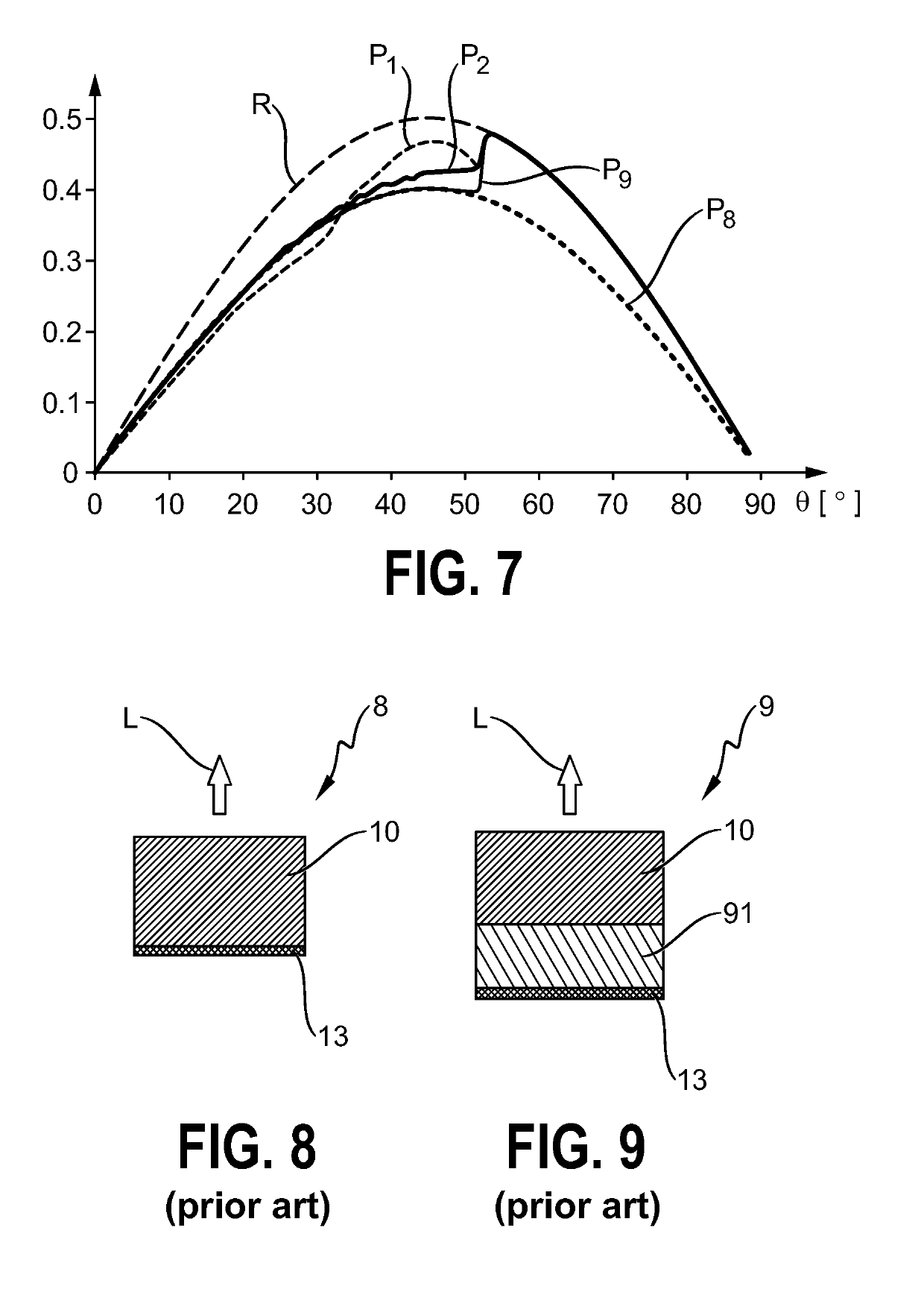Broadband mirror
a mirror and wideband technology, applied in the field of broadband mirrors, can solve the problems of inability to achieve 100% reflectivity, dbr may only effectively reflect light within a limited range of wavelengths and angles of incidence, etc., to achieve the effect of improving the reflectance of the planar layer stack, increasing reflection, and reducing transmission
- Summary
- Abstract
- Description
- Claims
- Application Information
AI Technical Summary
Benefits of technology
Problems solved by technology
Method used
Image
Examples
first embodiment
[0032]FIG. 1 shows the broadband mirror 1 according to the invention (in this and the following diagrams, composite die multilayer stacks are shown with exaggerated proportions; the height of a composite die is generally in the range of 5 μm to 15 μm). In this exemplary embodiment, the broadband mirror 1 is constructed as a composite die comprising a stack of four planar layers 10, 11A, 12, 11B and a reflective backing 13. Layers 11A, 12, 11B of suitable material are deposited one after each other, and the final layer 11B is terminated by a reflective backing 13. The planar layers 11A, 12, 11B can be built up in the usual manner, by vapour deposition or any other suitable technique, starting with an uppermost layer 10 and working “downwards”, applying a first low-index layer 11A, a high index layer 12, and a second low-index layer 11B Using the inventive method, the high-index layer 12 is applied to the non-patterned surface N of the first adjacent low-index layer 11A. The surface o...
second embodiment
[0034]FIG. 2 shows the broadband mirror 1 according to the invention. Here also, the broadband mirror 1 is constructed as a stack of four planar layers 10, 11A, 12, 11B and a reflective backing 13. In this embodiment, the surface of the first low-index layer 11A is patterned or roughened before depositing the high-index layer 12. A second low-index layer 11B is applied to the non-patterned surface N of the high-index layer 12. The patterned surface 110 of the first high-index layer 12A, in conjunction with the low-index / high-index boundary, also acts to prevent photons from passing in the direction of the reflective backing 13, and effectively re-directs them towards the light emission face 100 as described above.
third embodiment
[0035]FIG. 3 shows the broadband mirror 1 according to the invention. In this embodiment, the broadband mirror 1 is constructed as a stack of eight planar layers 10, 11A, 12, 11B. Three high-index layers 12 are sandwiched between low-index layers 11A, 11B. Each high-index layer 12 is applied to the non-patterned surface N of the preceding low-index layer 11A, 11B. The surface of each high-index layer 12 is roughened before depositing the subsequent low-index layer 11A, 11B. Since each high-index layer 12 (with its roughened surface 120) effectively “sends back” more photons in the direction of the light emission face 100 than it “lets through”in the opposite direction, the net result of using several such high-index layers 12 is that little or no photons make it to the lowermost face 101 of the mirror 1. Therefore, there is no need to apply a reflective backing to this rear face 101. There are advantages associated with not requiring a reflective backing, namely a saving in cost as ...
PUM
 Login to View More
Login to View More Abstract
Description
Claims
Application Information
 Login to View More
Login to View More - R&D
- Intellectual Property
- Life Sciences
- Materials
- Tech Scout
- Unparalleled Data Quality
- Higher Quality Content
- 60% Fewer Hallucinations
Browse by: Latest US Patents, China's latest patents, Technical Efficacy Thesaurus, Application Domain, Technology Topic, Popular Technical Reports.
© 2025 PatSnap. All rights reserved.Legal|Privacy policy|Modern Slavery Act Transparency Statement|Sitemap|About US| Contact US: help@patsnap.com



